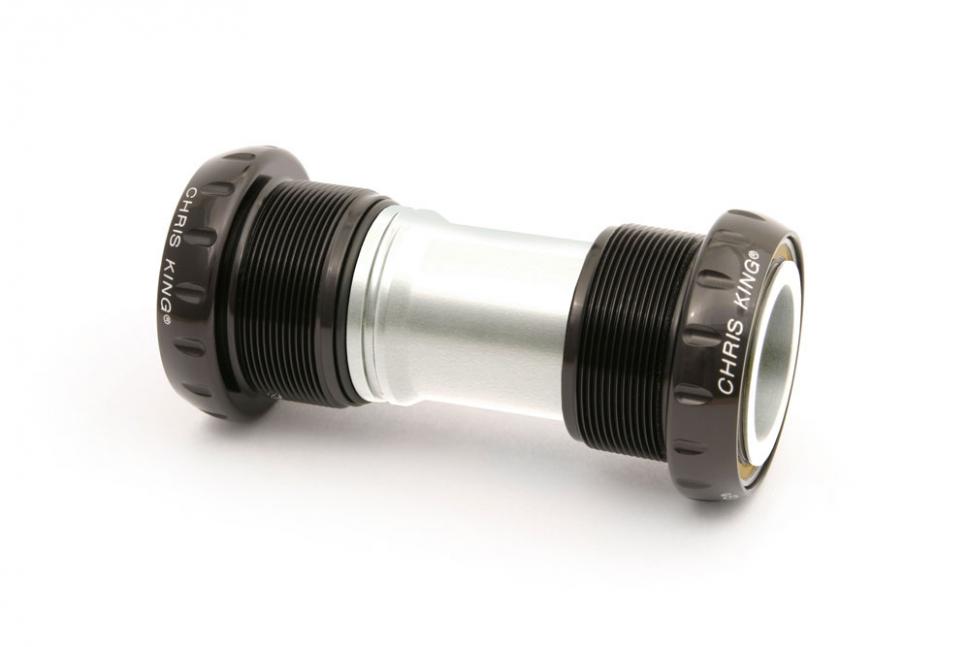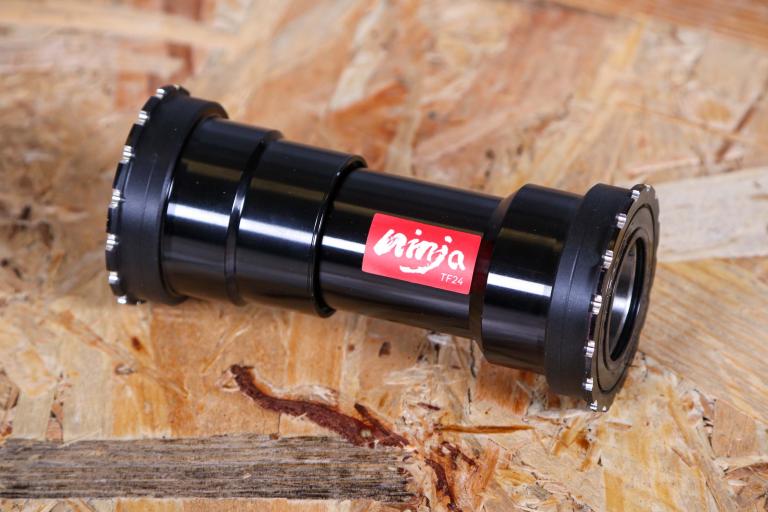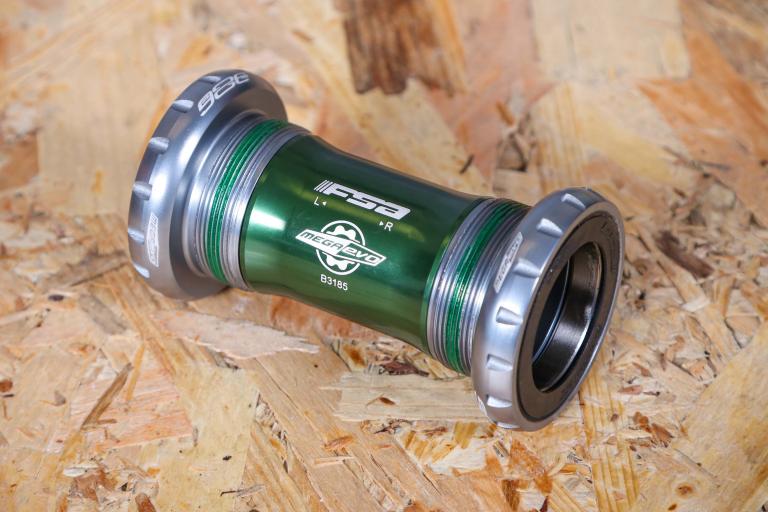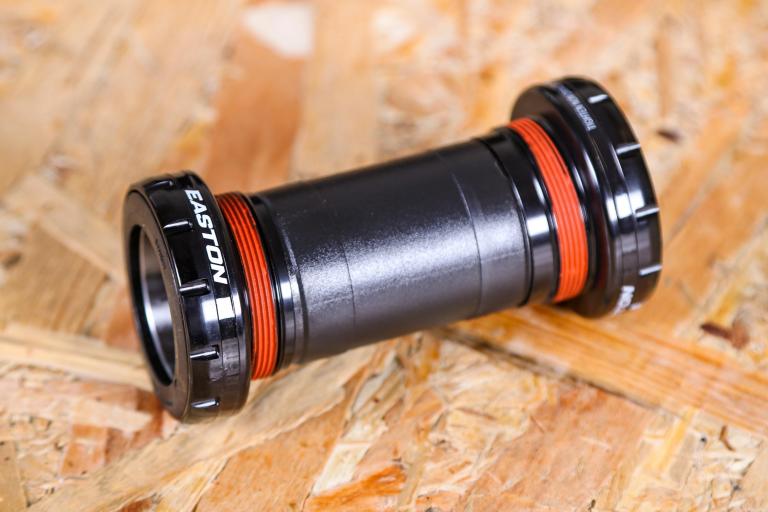- News
- Reviews
- Bikes
- Accessories
- Accessories - misc
- Computer mounts
- Bags
- Bar ends
- Bike bags & cases
- Bottle cages
- Bottles
- Cameras
- Car racks
- Child seats
- Computers
- Glasses
- GPS units
- Helmets
- Lights - front
- Lights - rear
- Lights - sets
- Locks
- Mirrors
- Mudguards
- Racks
- Pumps & CO2 inflators
- Puncture kits
- Reflectives
- Smart watches
- Stands and racks
- Trailers
- Clothing
- Components
- Bar tape & grips
- Bottom brackets
- Brake & gear cables
- Brake & STI levers
- Brake pads & spares
- Brakes
- Cassettes & freewheels
- Chains
- Chainsets & chainrings
- Derailleurs - front
- Derailleurs - rear
- Forks
- Gear levers & shifters
- Groupsets
- Handlebars & extensions
- Headsets
- Hubs
- Inner tubes
- Pedals
- Quick releases & skewers
- Saddles
- Seatposts
- Stems
- Wheels
- Tyres
- Health, fitness and nutrition
- Tools and workshop
- Miscellaneous
- Cross country mountain bikes
- Tubeless valves
- Buyers Guides
- Features
- Forum
- Recommends
- Podcast
review
 Chris King ceramic bottom bracket
Chris King ceramic bottom bracket£192.99
VERDICT:
Superbly engineered bottom bracket that's fully user-serviceable; should last an age although the steel-balled version offers better value
Weight:
98g
Contact:
www.evolutionimports.co.uk
At road.cc every product is thoroughly tested for as long as it takes to get a proper insight into how well it works. Our reviewers are experienced cyclists that we trust to be objective. While we strive to ensure that opinions expressed are backed up by facts, reviews are by their nature an informed opinion, not a definitive verdict. We don't intentionally try to break anything (except locks) but we do try to look for weak points in any design. The overall score is not just an average of the other scores: it reflects both a product's function and value – with value determined by how a product compares with items of similar spec, quality, and price.
What the road.cc scores meanGood scores are more common than bad, because fortunately good products are more common than bad.
- Exceptional
- Excellent
- Very Good
- Good
- Quite good
- Average
- Not so good
- Poor
- Bad
- Appalling
A Chris King bottom bracket is an excellent option that will last you years if you service it periodically.
It's the law in the world of cycling that you have to like Chris King stuff. If you don't, you're not In The Know. That's the way it works. Unlike lots of the nonsense that masquerades as truth, this one is grounded in reality. In my experience, Chris King components are superbly engineered, better still they work too.
I've been using this Chris King bottom bracket on my posh bike for a few months now. As you can see, the aluminium bearings cups are of the outboard variety and, as you can't see, the bearings themselves are ceramic rather than the usual stainless steel. I'll come back to the ceramic-ness in a minute.
What sets the Chris King bottom bracket apart from the crowd? For a start, they use more balls than usual – 24 in each bearing – to increase strength. If you go for the BB with steel bearings (£132.99), they're made in-house and they're very high quality.
Plus, the sealing is good and you can service the bearings, unlike most modern bottom brackets that aren't serviceable. Stay on top of the maintenance and this bottom bracket should last you years.
Re-lubing the bearing is easy with the Chris King BB injector tool. You just remove your cranks, lift out a sleeve and inject new grease. It's a little more complicated without that tool, but you still don't need to remove the bottom bracket from your bike. If the bearings get gritty and need a clean as well as a re-lube, that's pretty straightforward too.
I've re-lubed the bearings a couple of times as much to see how it's done as anything else. The performance has been flawless so far: smooth spinning and not a hint of creaking.
What's the benefit of ceramic? Chris King's marketing says the ceramic balls are 'lighter, harder... with greater roundness than stainless balls, for a bearing with exceptional speed and strength'.
Okay. Plus, the dependability of Chris King's sealing means you only need a small amount of low-viscosity lube in there to keep the drag low against the stainless steel races. The overall result is extremely low friction for efficient pedalling.
That's the theory. Can you discern that lack of friction out on the road? Nah, there's too much else going on to be able to isolate it. The ceramic bearings might have a slight performance advantage but that's not the reason I'd buy a Chris King bottom bracket. It's the high-quality design and the serviceability that are the real draw, which is why I'd probably save money and opt for the standard BB over the ceramic version.
The Chris King bottom bracket comes in road and mountain bike versions, and in Shimano and SRAM models. Between them they are compatible with most current 24mm crank axles – check the Chris King website for a list. They come in BSA thread only – there's no Italian version – with a 5-year warranty, and they're available in a variety of different colours.
Verdict
Superbly engineered bottom bracket that's fully user-serviceable; should last an age although the steel-balled version offers better value
road.cc test report
Make and model: Chris King Ceramic Bottom Bracket
Size tested: Mango
Tell us what the product is for, and who it's aimed at. What do the manufacturers say about it? How does that compare to your own feelings about it?
This is the road version. This ceramic version is aimed at performance riders although the advantages over a steel-balled version are marginal.
This is the Chris King write up:
"The Chris King Ceramic Bearing Bottom Bracket is identical in construction and compatibility to our stainless steel bearing bottom bracket. All the Chris King qualities you love remain the same - Durability, Serviceability, Performance & Made in the USA. To this we've added ceramic balls, which are lighter, harder and with greater roundness than stainless balls, for a bearing with exceptional speed and strength.
Chris's bearing design allows us to use more rolling elements, or balls, than production-house bearings and we squeeze 24 into each bearing. More balls per bearing amplifies the greater strength of the individual ceramic ball and when built into our acclaimed stainless steel races make a foundation for smooth and strong pedaling. The ceramic balls are harder and lighter which translates to faster movement with reduced friction. The combination of these factors when paired with our reliable sealing system allows us to use a very small amount of low-viscosity lube in the bearing meaning very little drag in the bearing. The result? You pedal with greater efficiency.
Partner this bottom bracket with our BB Injector Tool to quickly and easily repack your bearing grease and you have a high-performance bottom bracket that will last a long, long time."
Rate the product for quality of construction:
9/10
High-quality design, high-quality materials, precision made.
Rate the product for performance:
9/10
Rate the product for durability:
9/10
Should last ages thanks to the user serviceability.
Rate the product for weight, if applicable:
9/10
Rate the product for value:
7/10
Depends how you look at it. It's a big outlay, but could easily work out cheaper in the long run thanks to serviceability and potential to last ages.
Tell us how the product performed overall when used for its designed purpose
Its excellent.
Tell us what you particularly liked about the product
The fact that you can service it.
Tell us what you particularly disliked about the product
It's a shame you need to buy a specific tool to make maintenance easy (although you can manage without).
Did you enjoy using the product? Yes
Would you consider buying the product? Yes
Would you recommend the product to a friend? Yes
About the tester
Age: 41 Height: 190cm Weight: 75kg
I usually ride: My best bike is:
I've been riding for: Over 20 years I ride: Most days I would class myself as: Expert
I regularly do the following types of riding: time trialling, commuting, club rides, sportives, general fitness riding,
Mat has been in cycling media since 1996, on titles including BikeRadar, Total Bike, Total Mountain Bike, What Mountain Bike and Mountain Biking UK, and he has been editor of 220 Triathlon and Cycling Plus. Mat has been road.cc technical editor for over a decade, testing bikes, fettling the latest kit, and trying out the most up-to-the-minute clothing. He has won his category in Ironman UK 70.3 and finished on the podium in both marathons he has run. Mat is a Cambridge graduate who did a post-grad in magazine journalism, and he is a winner of the Cycling Media Award for Specialist Online Writer. Now over 50, he's riding road and gravel bikes most days for fun and fitness rather than training for competitions.
Latest Comments
- Backladder 2 sec ago
I'm unclear about how not wearing a helmet relates to measuring their speed?
- OnYerBike 13 min 32 sec ago
Exactly how frequently is one required to check one's bike rack for stow-aways? Admittedly I don't have a motor home, and it's been a long time...
- Steve K 47 min 46 sec ago
Even though I have only done three 200km plus rides in my life (albeit all in the last three years) my first thought on seeing the headline was "I...
- chrisonabike 49 min 7 sec ago
What are you, some kind of authoritarian* Communist?...
- brooksby 51 min 21 sec ago
Where did you but your crystal ball, again?
- Morpheus_00 1 hour 5 min ago
I'm lucky in that I've previously downloaded regions so can carry on syncing for free. If they stopped this I think I'd be prepared to pay say £10...
- quiff 1 hour 47 min ago
I'd say just 4 reverting is a good result; they haven't just been steamrollered by public pressure. Of those, I know 3 well and agree that 30 is...
- hawkinspeter 2 hours 57 min ago
Another day, another BristolPost piece about Park St: https://www.bristolpost.co.uk/news/bristol-news/park-street-bus-gate-latest-10008820
- Steve K 3 hours 2 min ago
It's actually not the first time - have a read of Geoff Thomas's autobiography.
- roboito 3 hours 41 min ago
I have these on a steel Galaxy, they make a great big ding rather than a click. I love changing gear with them.




Add new comment
3 comments
Chris Boardman looked in to the use of ceramic bearings (I have a feeling that it was part of his hour record attempts). His testing showed them to save watts over a stainless bearing, but only if they are run dry (i.e. no lube). Once you lube them, the differences become almost indistinguishable. Since an unlubed BB is only really any use on a track, it's better to go with a high quality stainless bearing and save the money!
Can't disagree with you italiafirenze, lots of top-end cycling gear is more priced on image rather than actual value (even without considering the diminishing returns point). The difference (I think) with people like Chris King is that they make serviceable parts - so you stand a chance of making back some of the cash outlay by being able to service rather than replace.
And all that said, I'm not adverse to paying more for certain cycling gear just because it looks nice!
Ceramic; it's just a marketing device.
Consider that the cycling industry thrives on consumption of often expensive goods. Companies realise that as well as the Lidl merino wearing, teabag carrying, inner tube repairing randonneurs there is now a glut of well-paid men (mostly) riding expensive bikes with a higher level of disposable cash.
Now all this cash is great for the cycling industry but getting it from these people is a bit tricky. This is where price targeting comes in.
Consider a cycling jersey, as we all own one. Every jersey regardless of material or brand, fulfils the same basic function. In any market every individual customer puts their own value on a product offered.
So I might think I'd pay £30 for a jersey and you might say £25, if the jersey is for sale at £20 we'd both buy it as it is good value to each of us. But the company selling has lost out on £5 from you and £10 from me. Ideally the company would like to be able to sell it to me at £30 and you at £25, but that doesn't work in real life, ask Amazon.
So they create two jerseys. Basic and premium. One for £20 and another for £30. The £30 jersey has an extra zip. It cost the company another 2p at the manufacturing stage. All they have to do is market the extra zip as being some sort of awesome feature (replace this with merino wool, race fit, aero material or whatever you like, they are all the same. Some are real benefits, some aren't; none of them justify the price premium alone,)
But now, I buy the £30 jersey and you still buy the £20 jersey, the company is up an extra £10 from me (less the 2p manufacturing cost; though in lots of real examples the cheaper version actually has higher cost).
Now apply the same logic to bottom brackets, there are some people who have got £200 to spend on a bottom bracket. You might be one of them, so the manufacturer has to create a product to fit that need. And it has to create value by making it seem better.
Occasionally somebody will come up with the numbers and tell us if any of this makes a real difference. But if there was scientific evidence that ceramic bearings saved the average man watts of power wouldn't that be the main headline? It would if I was selling it.
So you have to consider, maybe it doesn't make a difference and just exists to allow people to spend £200 on a bottom bracket if they want to.
If you'd like to read more I recommend this http://timharford.com/2005/10/go-figure-an-extract-from-the-undercover-e...
It's a great book and very interesting whether you like economics or not.